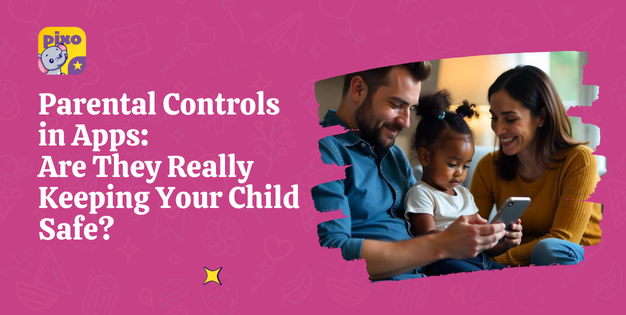
The 7 Best Alphabet Learning Apps for Preschoolers – A Parent’s Must-Have List!
Finding the best alphabet learning app for your preschooler can feel overwhelming with so many options available. The right app should not only teach letter

Technology is woven into every part of childhood now—whether it’s homework help, entertainment, or social interactions. As parents, we want our kids to explore the internet safely, which is why parental controls in apps have become a go-to solution. They help block inappropriate content, limit screen time, and monitor activity, giving us peace of mind.
But here’s the big question: Are parental controls enough? While they provide a safety net, they aren’t foolproof. Children are tech-savvy, digital risks are always evolving, and no app can replace active parenting and open communication. Let’s take a closer look at what parental controls can (and can’t) do—and how parents can go beyond filters and settings to truly safeguard their child’s digital world.

Parental control settings are useful tools, but they come with limitations. Understanding both their strengths and gaps will help you use them effectively.
Block explicit content – Filters help keep inappropriate videos, websites, and apps out of reach.
Set screen time limits – Helps regulate device usage to avoid excessive screen time.
Restrict downloads – Prevents children from installing unauthorized or age-inappropriate apps.
Track location – Some parental control apps offer GPS tracking for added safety.
Monitor online activity – Gives parents insight into search history, app usage, and screen time habits.
Stop all inappropriate content – Some risky content still sneaks through filters.
Prevent online interactions – They can’t control who your child talks to on social media or gaming platforms.
Teach online responsibility – Kids still need guidance on what’s safe and what’s not.
Prevent workarounds – Many kids figure out ways to bypass restrictions using VPNs, incognito mode, or borrowed devices.
Replace active parental involvement – Technology alone can’t replace open communication and trust.
Bottom line? Parental controls help, but they aren’t a one-stop solution for digital safety.

Instead of relying solely on app settings, parents should combine them with active involvement and real conversations. Here’s how:
Why it matters: Even with restrictions, children will encounter challenges online. It’s important to prepare them rather than just block content.
Why it matters: Kids mimic what they see. A balanced approach to screen time works better than strict bans.

Why it matters: Even “kid-friendly” apps can expose children to harmful content, strangers, and peer pressure.
Why it matters: Not all apps offer the same level of protection. Some are more invasive, while others lack essential features.
Why it matters: The internet evolves fast, and what’s safe today might not be tomorrow.
Feeling Overwhelmed? Let’s Talk! Join Our Parent Forum and Get Expert Advice & Support!
Parental controls help limit screen time, filter content, and monitor online activity to keep kids safe from digital risks.
No, they are helpful but not foolproof. Kids need guidance, education, and supervision to navigate online spaces safely.
Parental controls can’t prevent cyberbullying, filter all harmful content, or teach online responsibility. Some kids find ways to bypass them.
Combine them with open conversations, clear screen time rules, and active parental involvement for better online safety.
Choose an app that offers content filtering, screen time limits, privacy protections, and customizable settings to match your child’s needs.
Parental controls are a useful tool, but they aren’t a complete solution to keeping kids safe online. True digital safety comes from a mix of smart tech settings, open conversations, and teaching kids how to navigate the internet responsibly.
While parental controls help protect your child from inappropriate content, it’s equally important to ensure that the apps they use are designed to actually support learning, not just passively entertain. Learn more about how educational apps can impact your child’s development.
At the end of the day, the best protection isn’t just an app—it’s you. By staying involved, setting clear expectations, and building trust, you’re giving your child the tools they need to explore the digital world safely.